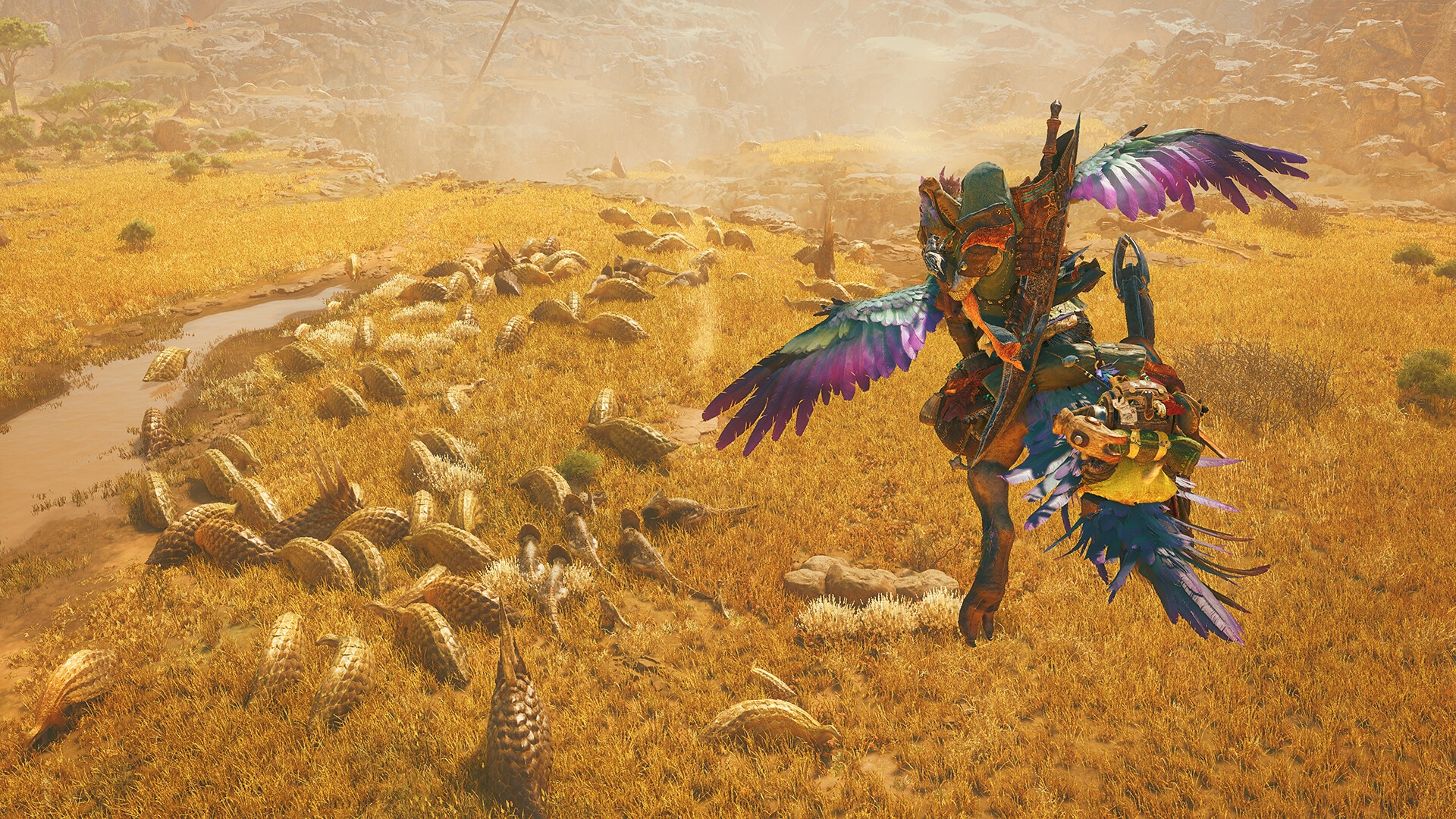TechRadar Verdict
Monster Hunter Wilds is a bold and bustling continuation of its predecessor’s approach to streamlining the once-niche series. By stripping away some of the more frustrating elements of the past, and focusing on getting players into hunts as quickly as possible, Monster Hunter Wilds has the potential to launch the series to new heights. Aside from some head-scratching omissions, Monster Hunter Wilds is a collection of the greatest hits from past games, one that finally delivers on the promise of a truly vibrant and living open world.
Pros
- +
Seamless open world
- +
Seasonal changes are breathtaking to behold
- +
Campaign is all killer, no filler
- +
Bringing along a second weapon is a true game-changer
- +
New Focus Mode is the best addition in over a decade
Cons
- -
Lack of a central hub does rob the game of some charm
- -
Visuals can be inconsistent with some areas looking washed out.
Why you can trust TechRadar
Monster Hunter Wilds has some rather big shoes to fill. For one, it’s the sequel to the record-breaking blockbuster that was Monster Hunter World, a game that saw the long-running, and oftentimes niche franchise reach a whole new group of altogether more mainstream gamers. It also follows Monster Hunter Rise, which, while not as big as World, was extremely successful as an originally exclusive Nintendo Switch game, and introduced a host of new traversal systems.
Platform reviewed: PS5 Pro
Available on: Xbox Series X, Xbox Series S, PC, PS5
Release date: February 28, 2025
In many ways, Wilds has had to walk a tightrope between the approaches showcased in previous games, providing something for the new fans, while appealing to those that have stuck around over the past 20 years. By streamlining the formula that shined bright in Monster Hunter World, and by finally offering a seamless open world, Monster Hunter Wilds manages to hit all of the right notes, while avoiding some of the more frustrating elements that have plagued the series since its inception.
Let's skip to the good part
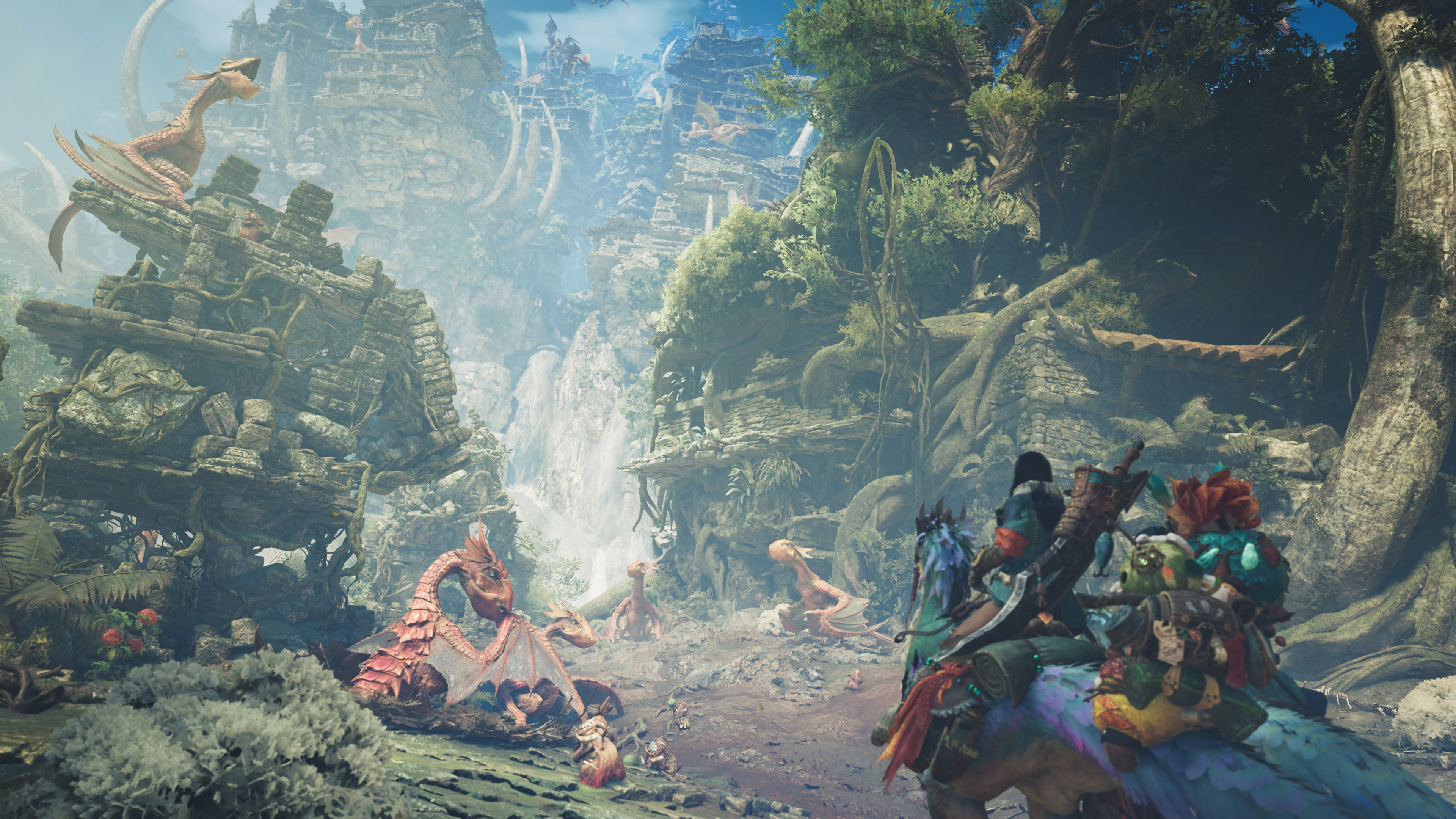
Loading up a brand new Monster Hunter game is usually a mixed experience. To truly access the really good stuff, that being the High Rank endgame content, you need to first beat the campaign. In the past couple of games, this has been easy enough, though the shoehorned systems present in Monster Hunter Rise (Rampage Mode), and Monster Hunter World (colossal Elder monster battles) really dragged things out, extending the runtime of stories that were fun, but forgettable.
Monster Hunter Wilds is an entirely different beast with regards to its campaign, which is streamlined, slight, and punchy. For one, there’s no ‘gimmick’ to speak of, with the headline feature being the seamless open world with dynamic seasons and wildlife. There are no on-rails giant monster battles, no filler quests spent in quasi-tower-defense modes, just epic monster hunts, one after the other. One annoying side character aside, this is the best Monster Hunter campaign ever, punctuated by a final boss fight that’s already among my all-time favorites in all of gaming.
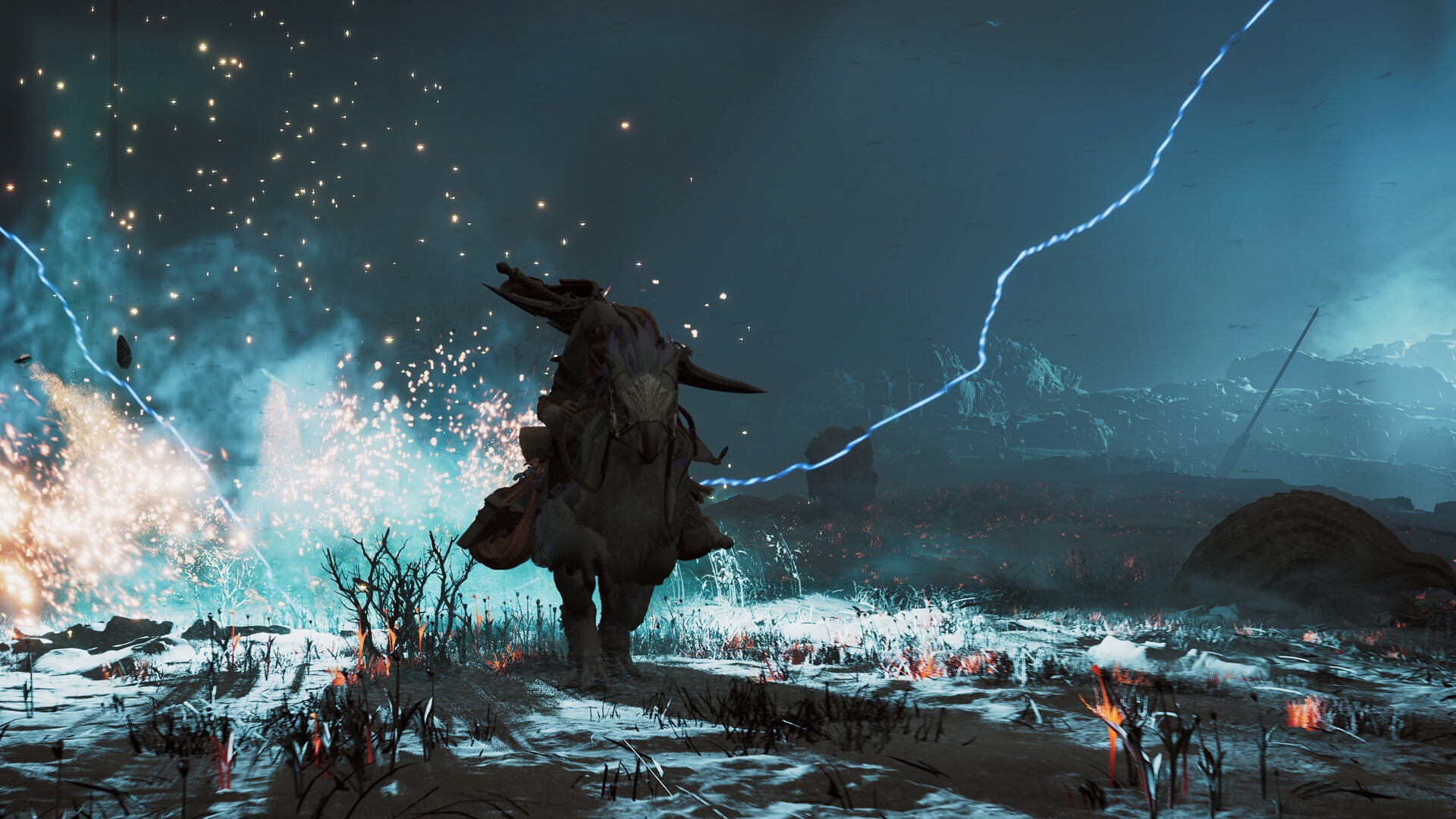
The reverence that Monster Hunter Wilds shows for every single one of its monsters shines through from the very beginning. Doshaguma, a monster featured in the beta, and one that wasn’t particularly interesting at first, is introduced into the main game with an exhilarating sequence, as lightning sparks all around, and other monsters come to join in on the hunt. Several moments like these bookend other major hunts in the campaign, with every single main fight being a show-stopping event.
The Monster Hunter Wilds campaign is a globe-trotting adventure that encourages you to spend as little time in your base camp as possible. There’s still fun to be found in crafting new gear, building new loadouts, and specializing your Item Pouch, but largely, you’ll be encouraged to be out and about as much as possible.
One casualty of expanding the open world to include multiple hub villages is that the main hub, which you’ll have seen if you played the beta, doesn’t really measure up to the more dedicated locales like Astera, found in previous games. Much more focus has been applied to Pop-Up Camps, with Monster Hunter Wilds once again encouraging the player to set out and claim small pieces of the world outside, rather than get too settled at the ramshackle Base Camp in the Windward Plains. It’s a strange choice, though one that does tie into the game’s overall mantra. Cooking a meal in your camp just isn’t as fun as watching a team of Palico chefs preparing dishes for you back at Kamura Village or Astera, however.
Someone call Attenborough
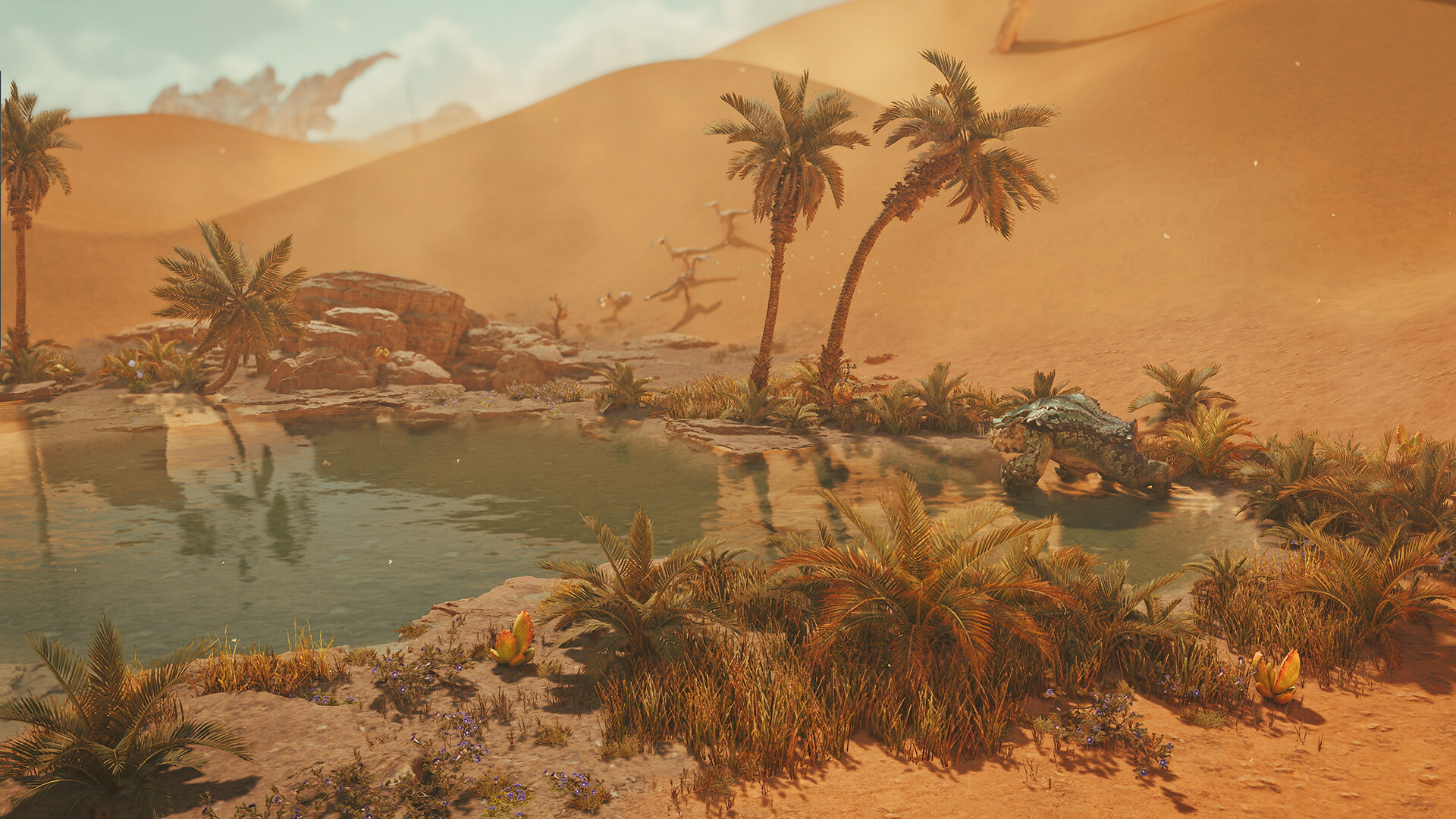
The vast open world of Monster Hunter Wilds is the main draw that sets the game aside from its predecessors. For the first time in the series, the map is an interconnected, seamless, and dynamic one. From camp, to hunt, to Field Investigations, there are no menus or loading screens getting in your way as you adventure. Of the handful of different regions that make up the world around you, each is visually distinct from one another, fostering its own specific collection of flora, fauna, and resources. Not only that but there are seasons to reckon with here as well. Fallow will strip away some of the biodiversity of a region, turning areas like the Windward Plains into dusty deserts, populated by only the hardiest of creatures.
Sign up for breaking news, reviews, opinion, top tech deals, and more.
Inclemency then rolls in, bringing sandstorms, riling up certain insects to boost passive effects that can be used on a hunt, and in some cases, completely changing the landscape. After the storm clouds fade, the season of Plenty comes about, and let me tell you, the change in conditions are seriously impressive. Gone are the barren dry lands of the Fallow, and the cloudy skies of Inclemency, as you look out over an Edenic environment teeming with creatures.
The campaign does a masterful job of leading you through this cycle for the first time, and the sheer dynamism of the world never really loses its charm. This doubling down on creating a living, breathing natural world follows the path laid in Monster Hunter World. This time though, the variety in the life that occupies each region is genuinely breathtaking.
Once I was given the freedom to explore at my leisure, I spent hours simply riding through each region, watching as small monsters and other endemic animals went about their routines. Pink-furred apes snooze peacefully in the sun, small birds can be seen riding on the backs of large reptiles, pecking and pruning as they go. Whether you’re there to witness it or not, there’s a natural cycle to the world of Wilds, and meticulous detail, from the huge raptors that soar in the sky, to the lines of tiny leaf-cutting ants that walk in formation across the branches of trees. You can practically hear David Attenborough narrating the whole thing.
A story of seasons
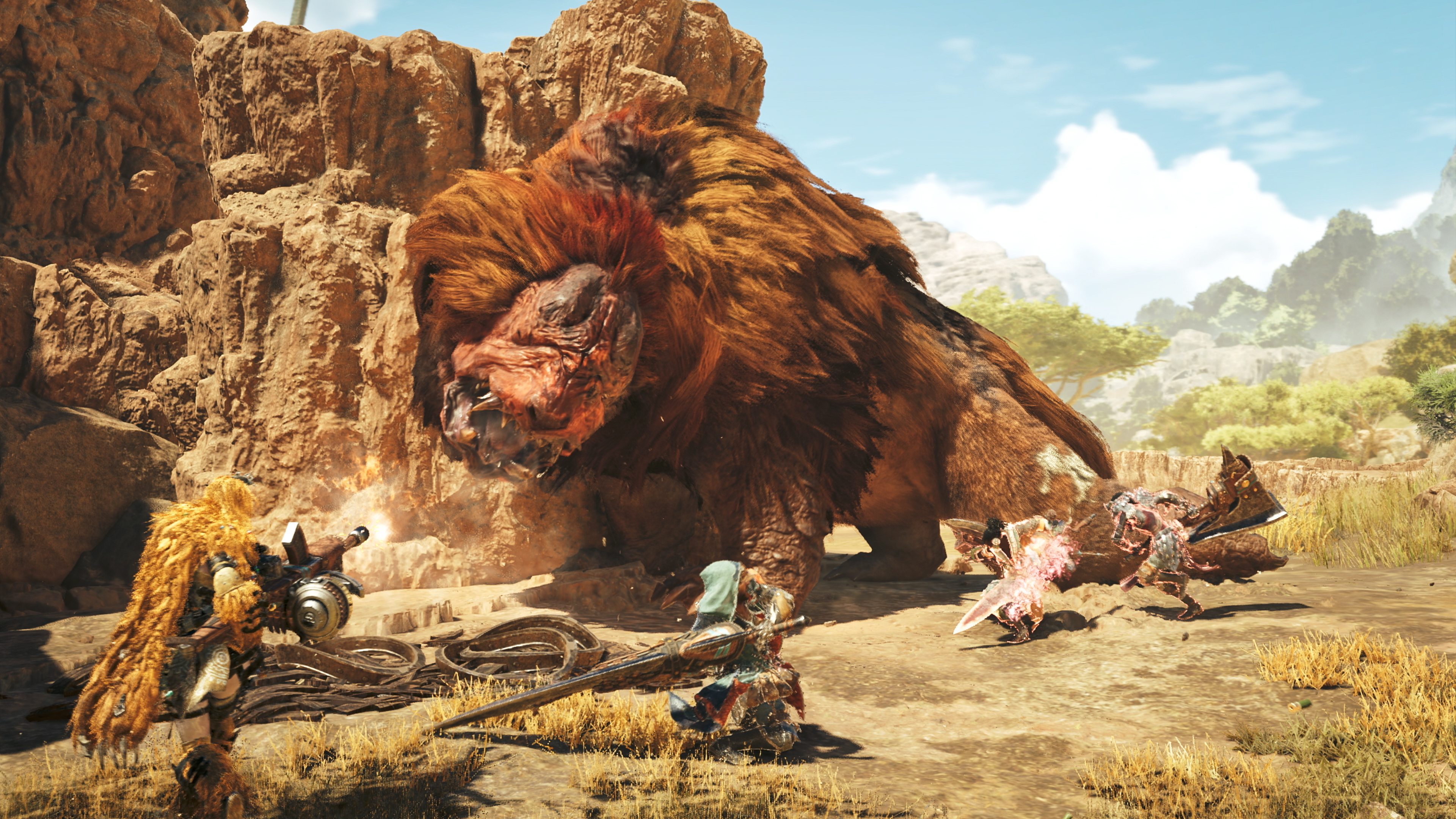
Monster Hunter games are rarely praised for their graphical fidelity, as they tend to put more resources into dynamic worlds and overlapping systems than boosting the resolution. Thankfully, Monster Hunter Wilds is very impressive to behold, though like a lot of other modern games this generation, does have some issues with looking washed out in certain environments. Some regions like the forest are impossibly dense, and I was regularly taken aback by just how many small monsters could be on screen at once. In fact, entire herds can be seen in some moments, running alongside large monsters as you give chase.
Performance-wise, the game runs smoothly on PlayStation 5 Pro, especially in the Prioritize Framerate mode. There is quite a hit to visual fidelity, but with how frenetic fights can get, you’re going to want those 60 frames per second (fps). What Monster Hunter Wilds may lack slightly in pure graphical prowess, it more than makes up for in the way its seasons change the world. Atmospheric fog effects, dust clouds that precede huge sandstorms, and puddles that follow the heavy rain all look spectacular, refreshing the palette with a complete change of scenery just before any one locale starts to overstay its welcome.
Focus, Hunter!
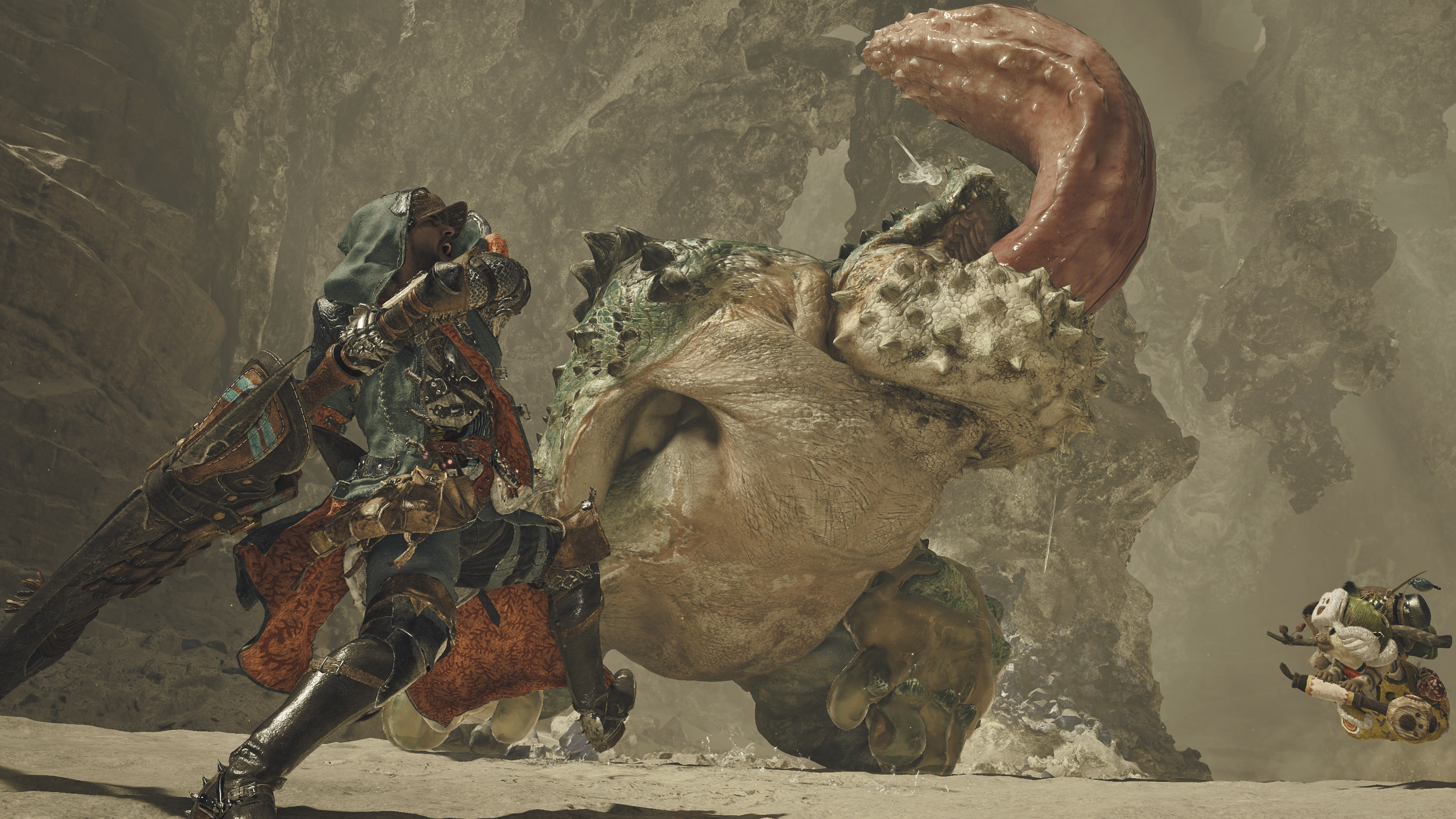
Monster Hunter Rise introduced a bunch of new systems into the mix, primarily focused on speeding up traversal, and the overall mobility of hunters. In this respect, Monster Hunter Wilds does feel a little bit limited in comparison, and it took me a few hours to adjust to the fact that I didn’t have my Wirebugs or Switch attacks on me anymore.
The Seikret, your trusty mount, is on par with the Palamute from Rise in terms of speed and does have a glide ability that’s a neat addition, though functionally pretty useless. Seikrets don’t help you in battle directly, but your Palico is still there to provide support if you hunt solo. If you’d rather not squad up with other players, non-player character (NPC) Hunters can be called into Hunts, a feature that absolutely needs to become a staple for the series moving forward. Overall, combat is faster than in World, and decidedly flashier, though don’t expect to be darting around in the air all that much, or pulling off acrobatic spinning finishers with every weapon like in Rise.
Perhaps the biggest game-changer is the ability to bring two weapons into battle with you. As a Long Sword main, I finally started to experiment with Bowguns, and even the Hunting Horn, largely due to how easy and fast it is to swap and experiment with new weapons. After a few hours, I was trying different combinations to best counter a particular monster’s moveset, experimenting with the Hunting Horn’s weaponized jazz while applying status effects to my allies.
It’s easier than ever to try out each of the 14 weapons on offer in Monster Hunter Wilds, and I’d wager that many players will be encouraged to put down their old faithfuls to give some of the weirder loadouts a whirl. Focus Mode switches up the way Hunts play out too. Now, you can hold down the left trigger and aim your weapon, landing hits in the direction of your choice. This is the kind of addition that makes you wonder how it wasn’t included sooner, giving previously awkward weapons like the Hammer new maneuverability and depth. Focus Mode also ties into the new Wounds system, which sees glowing red spots appear on monsters after you’ve done damage to certain areas. Focus Strikes hone in on these weak spots, triggering dazzling special moves that in some cases, like the Insect Glaive, can add final flourishes to tried and tested combos.
Monster Hunter Wilds introduces Offset attacks, which can be used to stun monsters if timed while a monster is attacking. It also adds Power Clashes, which trigger when you’ve achieved a succession of Perfect Guards. The latter is a real sight to behold, as your target rams its head into the guard of your weapon, and you’re forced to push it off, stunning it and opening things up for follow-up attacks. One thing that’s a little disappointing, however, is that there are some weapons, like the Dual Blades, that don’t make use of these systems at all. This has happened in previous games, namely Monster Hunter World: Iceborne, but with weapon switching being as easy as it is here, it’s not as much of a let-down to have your favorite weapon left out of some of the new combat updates.
It’s clear that Monster Hunter Wilds is a bold step forward for the series, one that’ll likely draw in even more players than the gargantuan Monster Hunter World. Of course, it’ll take some time for the game to settle, and for the true meta to emerge among the community. With post-launch support (you can read what's planned for the next few months in our Monster Hunter Wilds roadmap article), Capcom is in prime position to make this a truly remarkable multiplayer experience, and with new monsters like Mizutsune already announced for later this year, we’re expecting big things from Wilds moving forward.
Should I play Monster Hunter Wilds?
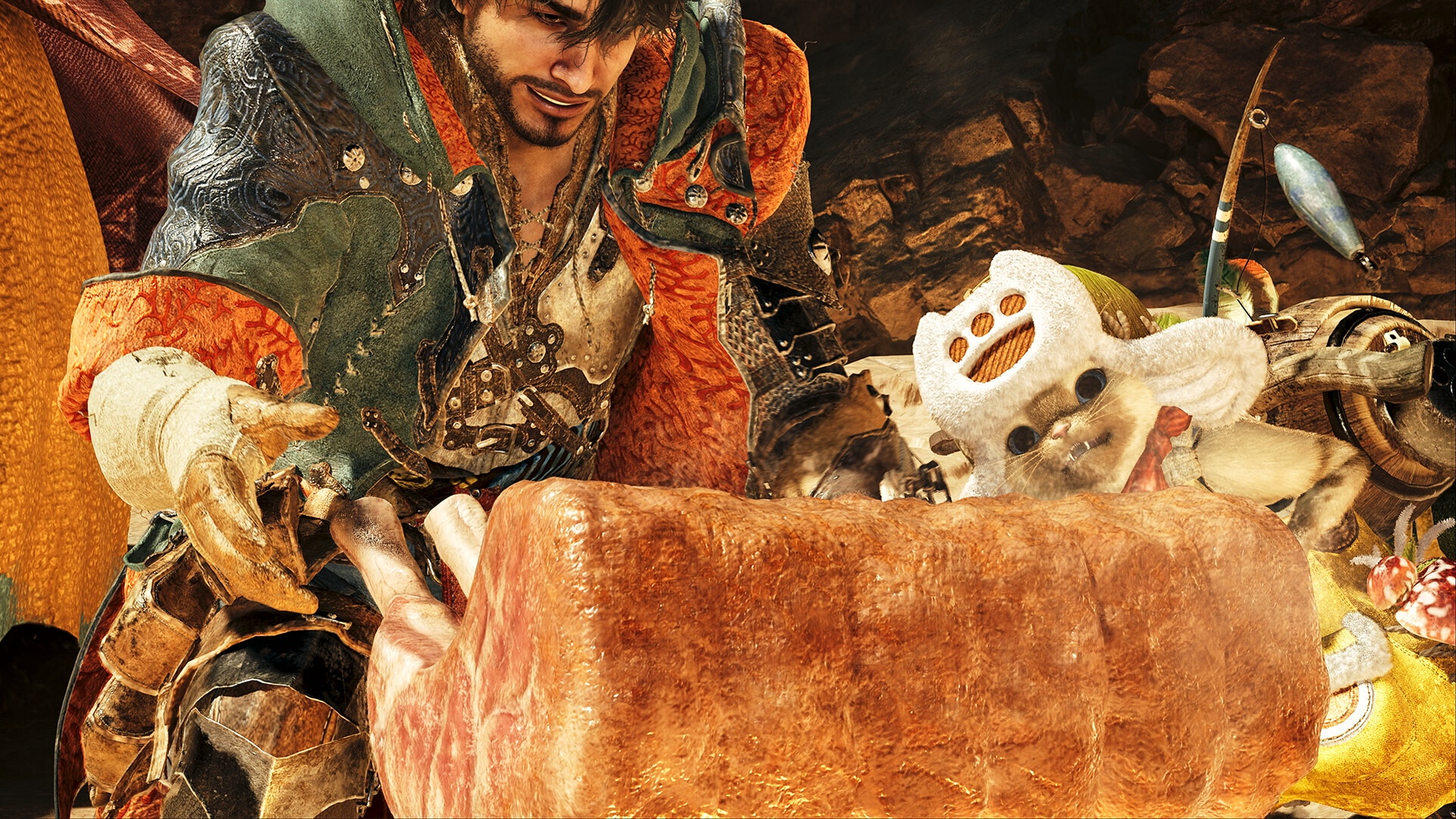
Play it if…
You want to jump into the Monster Hunter series for the first time
Monster Hunter Wilds is the most accessible, most user-friendly game in the series yet. It still has some incredibly obtuse systems, but the campaign acts as a great tutorial to cover the main systems and combat options. By allowing you to switch between two weapons, it’s also easier than ever to get to grips with the game’s diverse array of swords, axes, and bowguns.
You’re looking for hundreds of hours of multiplayer fun
While the campaign for Monster Hunter Wilds can be beaten in around 20 hours, the endgame content offers up so much more, with hunts that are great to jump into with friends. If you’re looking for a new multiplayer game to get into, this is one that’s likely going to be supported for a long time to come.
Don’t play it if…
You’re an old-school Monster Hunter purist
Monster Hunter Wilds is a continuation of what World set out to do, and that’s to open up the series to more players by streamlining more complicated systems. By doing this, it’s a very different game to that of the older entries in the series. The combat is excellent, and the monsters are diverse, but if you’re expecting the depth of something like Monster Hunter Generations Ultimate, you won’t find it here.
Accessibility
Monster Hunter Wilds offers some accessibility options, namely in button mapping and colorblindness assistance (Trichromatic, Protanope, Deuteranope, Tritanope), but its convoluted control schemes could be tricky for some. Though the series has definitely streamlined its approach to combos for certain weapons, you’re still going to be managing a bunch of quick menus, weapon gauges, and aiming reticles at once. A simplified control scheme would be a welcome addition, especially for more complicated weapons like the Insect Glaive, which require multiple buttons to be pressed and held at once to execute moves. There are some basic auditory settings, motion sickness reduction, and an arachnophobia mode as well.
How I reviewed Monster Hunter Wilds
I played Monster Hunter Wilds for 30 hours on the PlayStation 5 Pro. During that time I completed the campaign (in around 18 hours) and then cleared through the start of the post-game content. In general, I tried to tackle side quests as they appeared and set out into each new region to explore for a while after they unlocked. There were three graphics options available during the pre-release period: Prioritize Resolution, Balanced, and Prioritize Framerate. I played the vast majority of the game in the Prioritize Framerate mode, keeping it at a solid 60fps.
On PS5 Pro, I played the game using a 4K Samsung TV (Samsung 43-inch RU7400 Dynamic). I used a PS5 DualSense Edge controller, with the Razer Blackshark V2 gaming headset connected via the controller port. My time with the game has confirmed that it really does earn its place on our best PS5 Pro games list too.
Having started with Monster Hunter Generations Ultimate on Nintendo Switch, I’ve poured hundreds of hours into Monster Hunter since. Monster Hunter Rise is where I spent the most time, and I absolutely consider it to be one of the best Switch games, but recently I’ve gone back to Monster Hunter World to prep for the release of Wilds. In addition to being a fan, I’ve produced hundreds of Monster Hunter guides over the years, covering everything from the best weapon builds, to where to track down rare resources.
First reviewed February 2025

Jake is currently working as Evergreen Editor at TechRadar Gaming. Hailing from the overcast shores of Brighton in the United Kingdom, Jake can be found covering everything from features to guides content around the latest game releases. As seen on NME.com, Eurogamer.net, and VG247.com, Jake specializes in breaking games down into approachable pieces for guides, and providing SEO advice to websites looking to expand their audiences.
You must confirm your public display name before commenting
Please logout and then login again, you will then be prompted to enter your display name.
